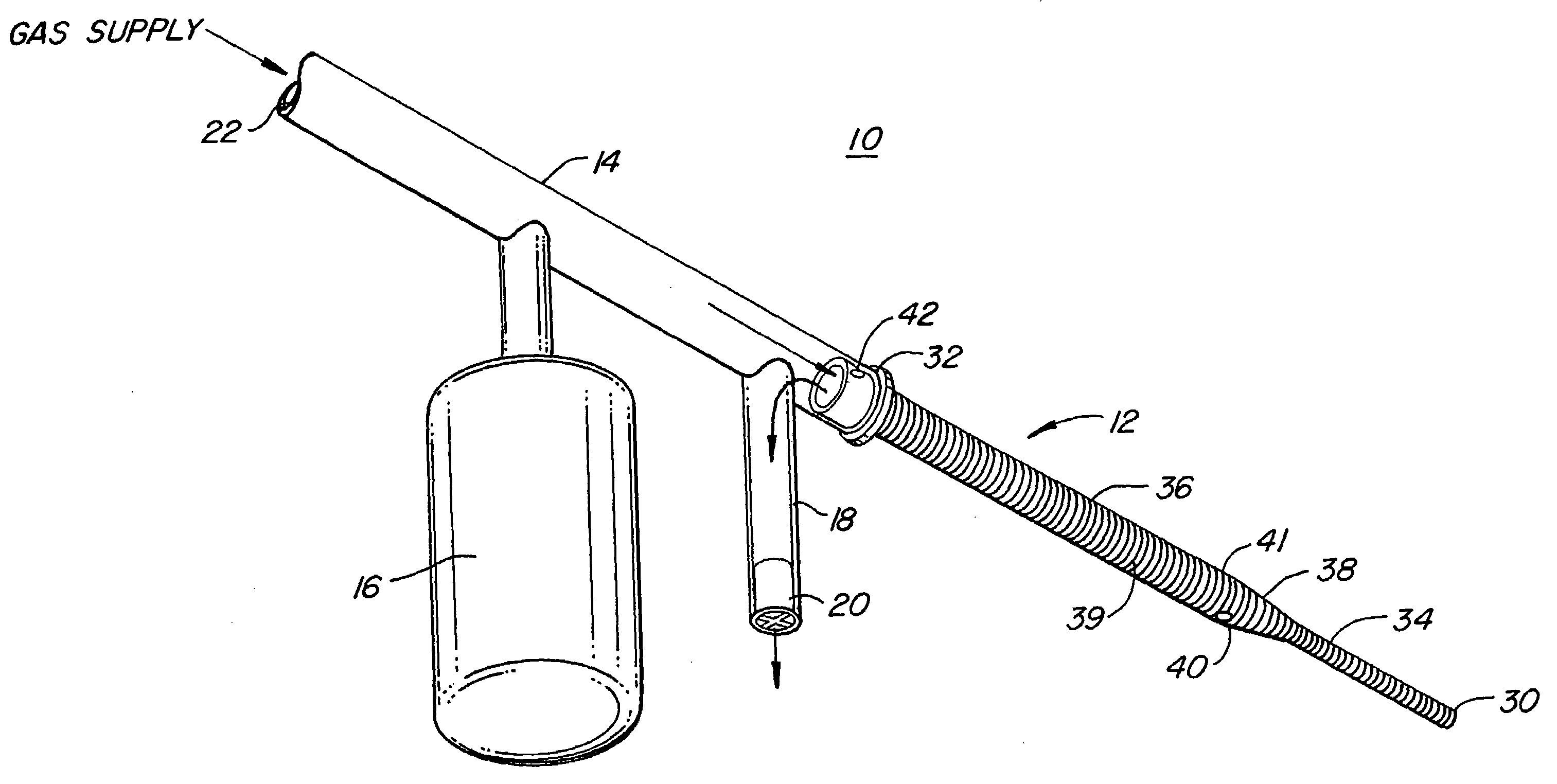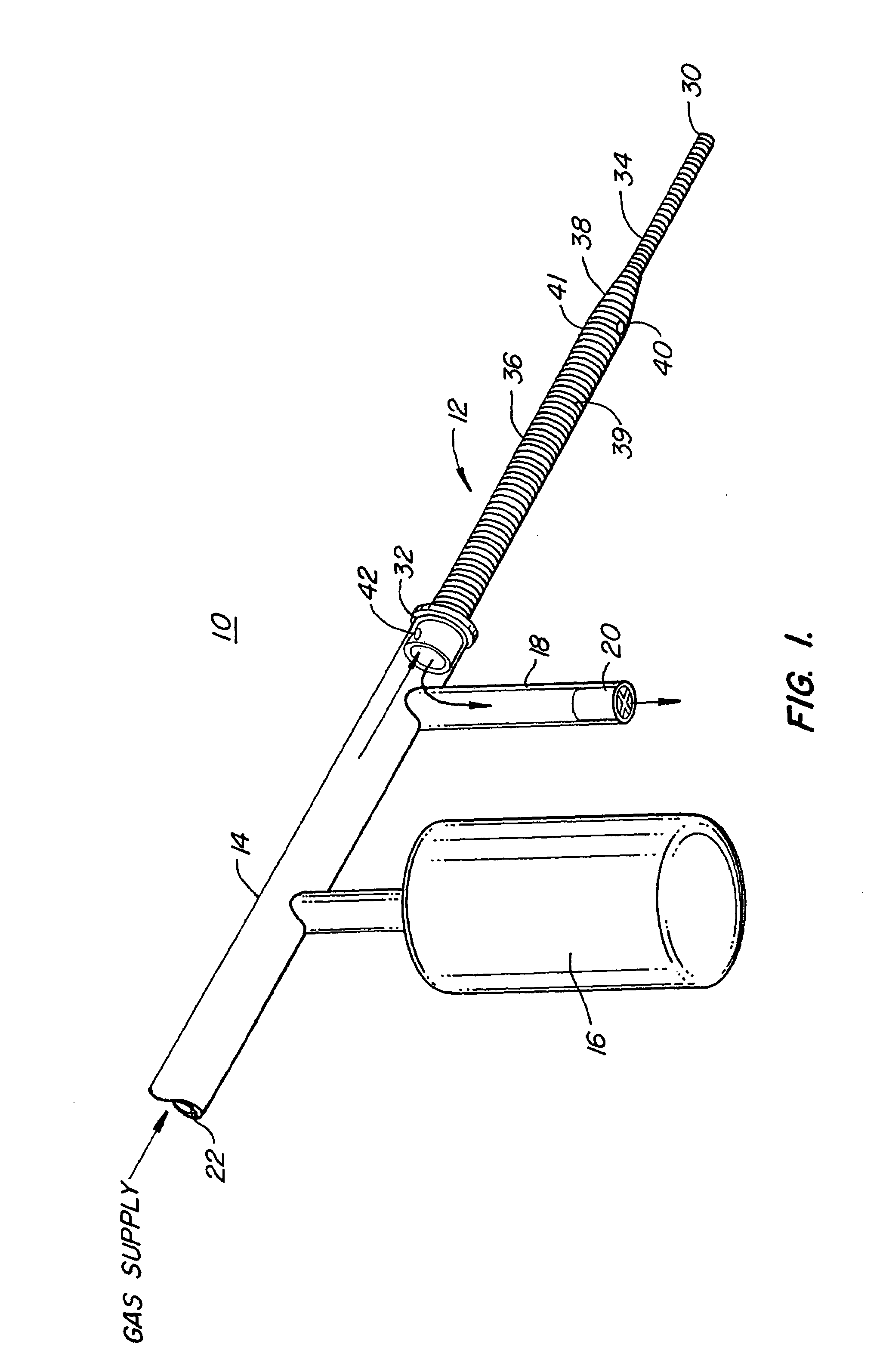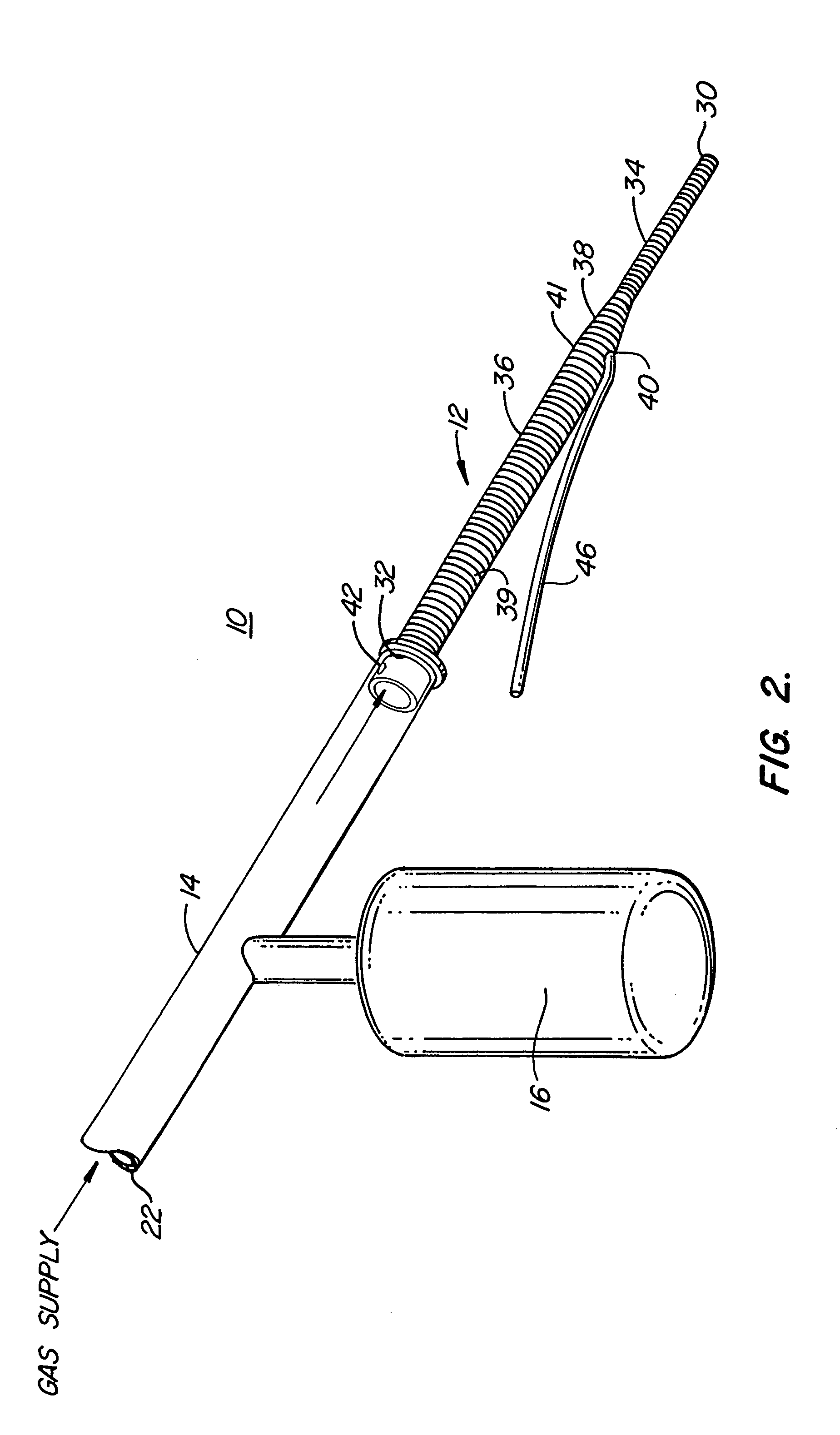Endotracheal tube using leak hole to lower dead space
a tracheal tube and dead space technology, applied in the field of medical devices, can solve the problems of reducing the lumen, reducing the oxygen flow to the body, and reducing the patient's breathing difficulty, so as to reduce the resistance of the airway, reduce the dead space, and remove the effect of expired gases
- Summary
- Abstract
- Description
- Claims
- Application Information
AI Technical Summary
Benefits of technology
Problems solved by technology
Method used
Image
Examples
Embodiment Construction
[0010]FIG. 1 shows a tracheal tube ventilation apparatus 10 for CPAP ventilation which is constructed in accordance with the present invention. This tracheal tube ventilation apparatus 10 includes an endotracheal tube 12, a flexible exterior tube 14, a balloon reservoir 16 and a safety tube 18 with threshold valve 20. Through use of a gas supply to the proximal end 22 of the flexible exterior tube 14 and a continuously leaking balloon reservoir 16, the tracheal tube ventilation apparatus 10 of this embodiment is able to maintain a continuous positive airway pressure of a humidified oxygen / air mixture to the lungs of the ventilated patient. The safety tube 18 and threshold valve 20 are used as a safety device to protect the patient's lungs from being overinflated. If the pressure being supplied to the lungs becomes too great, the threshold valve 20 will open in order to release excess pressure.
[0011]The endotracheal tube 12 has an open distal end 30 and an open proximal end 32. The o...
PUM
 Login to View More
Login to View More Abstract
Description
Claims
Application Information
 Login to View More
Login to View More - R&D
- Intellectual Property
- Life Sciences
- Materials
- Tech Scout
- Unparalleled Data Quality
- Higher Quality Content
- 60% Fewer Hallucinations
Browse by: Latest US Patents, China's latest patents, Technical Efficacy Thesaurus, Application Domain, Technology Topic, Popular Technical Reports.
© 2025 PatSnap. All rights reserved.Legal|Privacy policy|Modern Slavery Act Transparency Statement|Sitemap|About US| Contact US: help@patsnap.com



